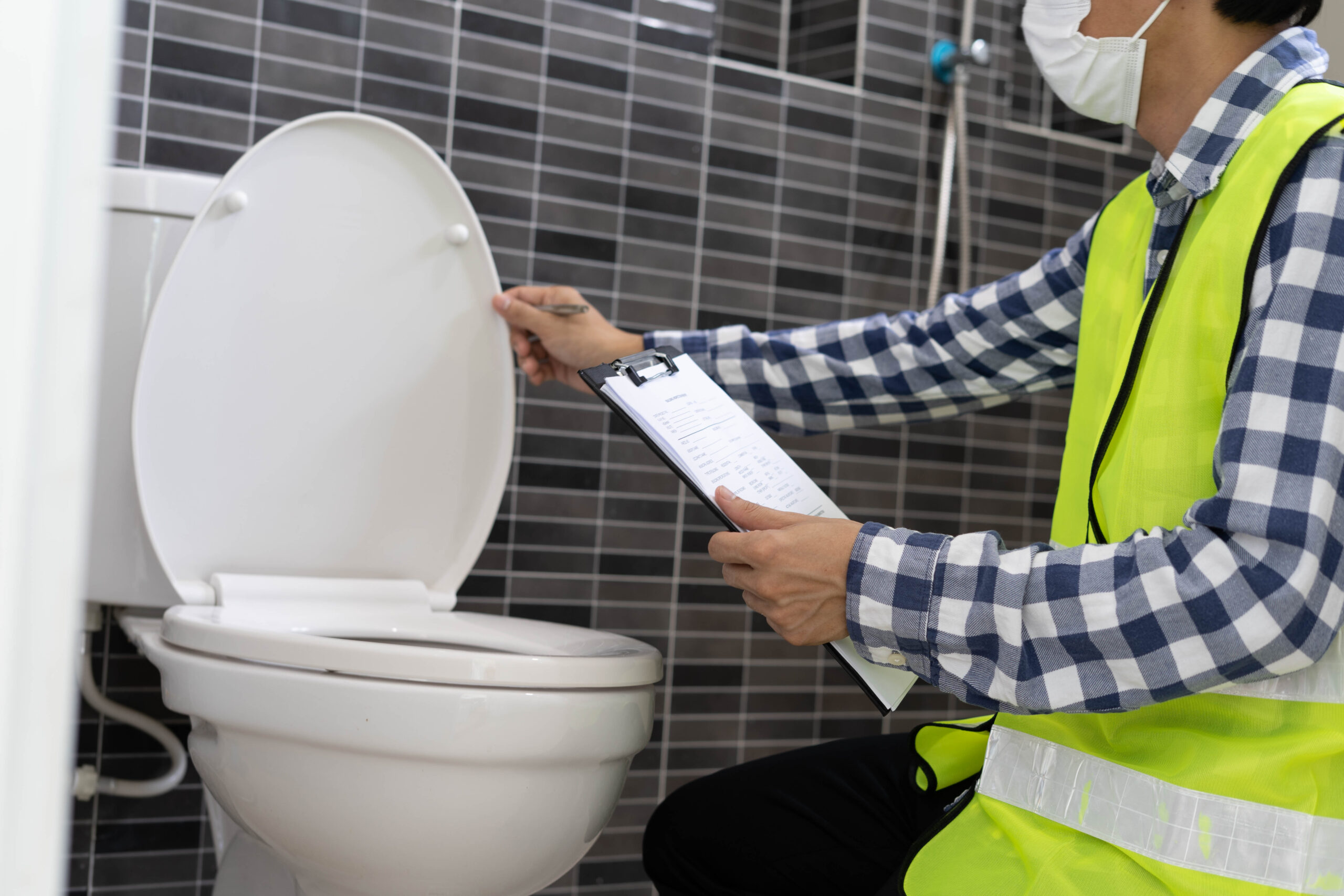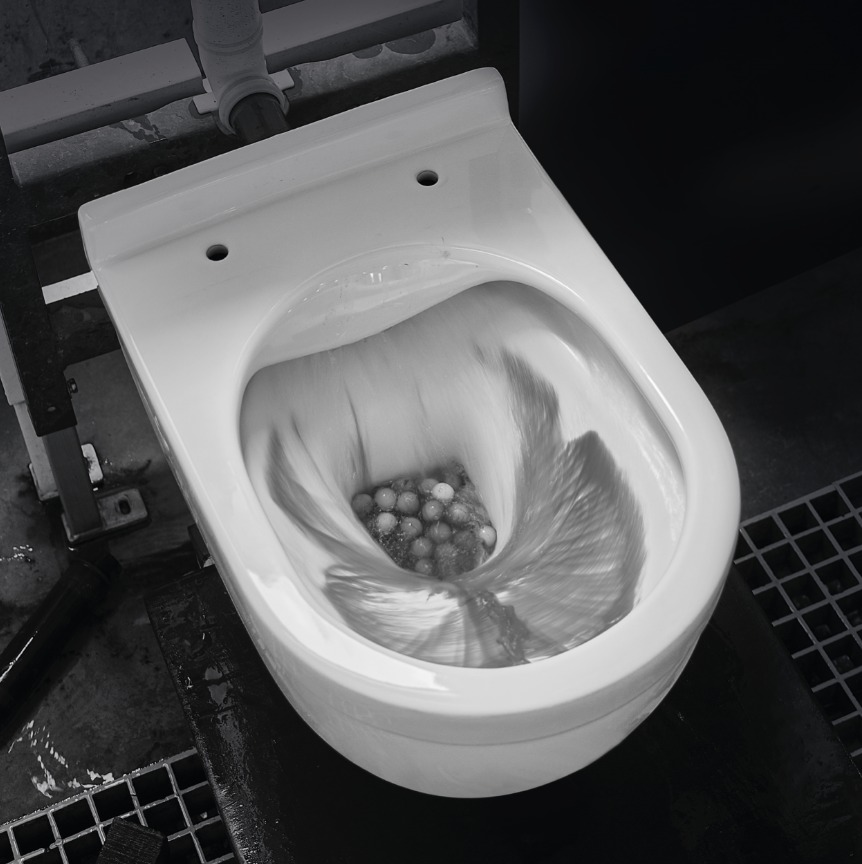
Rimless Toilet has been around since 2002. Introduced by a Japanese company, rimless toilet are a first choice. The rimless toilet work on a simple principle. When the rims are absent on a toilet bowl, the bacterial accumulation and dirt sticking around the rim are not a problem anymore. This makes cleaning easy and efficient. This feature also avoids odor and infections.
Rimless toilet are made by almost all bathware companies. A rimless toilet is a toilet without a rim around the toilet bowl, the open design of the toilet rim makes water flow in two directions. This creates a powerful flush that flushes the entire bowl clean with a hygienic flush resulting in less water consumption.
How does a rimless toilet work?
Rimless toilets have a different mechanism for flushing than normal toilets. While in normal toilets flush water flows through a rim, in a rimless toilet it is sprayed into the bowl via water jets. This creates a powerful and effective flush that sparkles the bowl. Rimless toilets are costlier than normal traditional toilets.
How to choose the best rimless toilet
To choose the best rimless toilet, it is important to consider the size, shape, flush type, and features of this toilet. The toilet set should be the right size for your bathroom. Rimless toilet have a variety of shapes, including oval, round, and square. Some rimless toilet have a single flush, while others have a dual flush. Many other features are available in rimless toilets like heated rimless toilet seats or bidets.
If you prioritize hygiene and easy cleaning, a rimless toilet is a great choice. If water conservation is a priority for you, a rimless toilet’s direct flush system uses less water. A rimless toilet’s sleek aesthetics give a modern and sophisticated bathroom design. While the cost of a rimless is higher than a normal toilet, many features justify the high price. You can choose your rimless toilet with the above features in consideration. Some of the best rimless toilet models include Orton bath rimless toilet, Catchpole and Rye rimless toilet, Kruse haustechnik rimless toilet, and Duravit rimless toilet. A toilet from above mentioned models can also be a rimless wall-hung toilet.
Why Rimless Toilets?
Rimless toilet have a modern and sophisticated look of a toilet that has gained popularity in recent years. They have several advantages compared to traditional toilets with rims in terms of hygiene and decorations. A rimless toilet review mostly has many features highlighted.
One of the most known advantages of rimless toilet is their hygiene. The absence of a rim avoids the scope for dirt, grime, and bacterial accumulation. This makes it easier to maintain and clean the toilet bowl. Traditionally rimmed toilets have unpleasant odors and have more chances of mold and mildew, which poses health risks.
Rimless toilet have a more powerful flushing mechanism compared to traditional toilets. The rimless toilet, instead of water flowing through the rim, utilize jets spraying water directly into the toilet bowl. This creates a powerful and effective flush that sparkles the bowl.
Water conservation is paramount these days. Rimless toilet bunnings are very efficient flush mechanisms. Hence, mostly single flush is enough for a hygienic flush. This direct-flush system uses only the required amount of water for a flush. Thus, reducing overall water consumption.
Rimless toilet bunnings have a lustrous and modern aesthetic that elevates the overall bathroom appearance. The rimless feature gives a sleeker and more streamlined appearance, giving the bathroom a contemporary look. Rimless toilets have additional features enhancing comfort and convenience. These features include automatic flushing mechanisms, bidets, and heated seats for chilling winters.
Following are some of the most popular features of Rimless toilets:
- Superior hygiene
- Improved flushing performance
- Water conservation
- Sleek aesthetics
- Additional features for enhanced comfort
Rimless Toilet vs Normal Toilets:
While traditional toilets have been around for decades, rimless toilet have made a market for themselves in the modern era. The comparison of rimless toilet vs normal toilet is competitive and usually the comparison has diplomatic results.
Rimless Toilets
Rimless toilet do not have a rim around the inner surface of the bowl. While this rim is evident in traditional toilets. This design eliminates areas where bacteria and dirt, grime can accumulate.
Advantages of Rimless Toilets
The rimless design confirms a sparkling toilet rimless toilet bowl, this reduces the risk of odors and mold growth. Rimless toilet utilize a direct-flush technology. They spray water jets directly into the rimless toilet bowl. The direct-flush mechanism uses less water and contributes to water conservation efforts. The rimless design is very classy and enhances the whole look of the bathroom. A model like Kohler rimless toilet can also be a rimless wall-hung toilet. A rimless toilet review mostly highlights the above advantages.
Disadvantages of Rimless Toilets
The direct-flush mechanism of rimless toilet sometimes leads to splashing and spraying causing water to scatter on the rimless toilet seat and outside the bowl. This is very messy and gives jitters in the cold season. Compared to traditional toilets, rimless toilet generate slightly higher noise due to forceful water jets and the absence of a rim to dampen the sound. It becomes a concern for people who like a quieter bathroom experience. Hence, this stands as one of the rimless toilet problems.
While rimless toilet have strong flushing performance, they can be more prone to clogging compared to traditional toilets. This is because the direct-flush mechanism does not effectively dislodge certain types of waste, potentially leading to blockages. In rare cases, water leakages around the bowl at the base are also considered a rimless toilet disadvantage. This can happen if the seal between the bowl and the base is not strong, cracked, or damaged. Rimless toilet are more expensive than normal toilets, and their installation also adds up to additional costs. Mainly due to the complex design and the special techniques for proper installation.
Normal Toilets
Traditional toilets or rimmed toilets have a rim around the interior part of the bowl. These toilets have been around for many decades and were invented before the rimless toilet.
Advantages of Normal Toilets
Normal toilets are broadly used and popular, making them a reasonable and popular decision among customers. Ordinary toilets are usually more affordable than rimless toilet. This makes them an alluring choice for customers with budget restrictions. Normal toilets or traditional toilets are broadly accessible in different styles and sizes to suit different washroom setups
Disadvantages of Normal Toilet
The rim of a normal toilet can trap dirt, grime, and bacteria, making it more challenging to maintain a clean and sparkling toilet bowl. This also results in the formation of bad odors and mold or mildew growth. Compared to rimless toilet, traditional toilets are not as water-efficient because of their flushing mechanism. This leads to excess water consumption and contributes to environmental concerns. The rim can make normal toilets appear bulky and outdated, potentially detracting from the overall bathroom design. This can be a concern for those looking for a modern and sophisticated bathroom aesthetic.
Conclusion
If you are considering a new toilet, a rimless toilet is a popular choice that offers hygiene, performance, and style. Their lustrous and efficient flushing mechanism makes them an effective investment for any modular bathroom. Rimless toilet are a modern and stylish alternative to traditional toilets. They offer many benefits, including improved hygiene, an effective and powerful flush, and water efficiency. If you are looking for a new toilet, a rimless toilet is worth considering. While there are very few rimless toilet problems, the features justify the price.
Rimless toilet are the representatives of modern advancement in toilet design, offering enhanced hygiene, better flushing performance, and water efficiency. However, they also have a few disadvantages, such as splashing, noise levels, and high installation costs. Normal toilets, on the other hand, provide vintage style, cost-effectiveness, and easily available options, but they have a few issues with hygiene and aesthetics.
Rimless toilet represent a modern advancement in toilet design, offering a combination of enhanced hygiene, improved flushing performance, water efficiency, and sleek aesthetics. While traditional toilets remain a viable option, rimless toilets are rapidly gaining popularity in contemporary bathroom designs. For those looking for a modern, hygienic, and water-efficient toilet solution, rimless toilet stand as the clear choice.
Ultimately, the choice between a rimless toilet and a normal toilet depends on the individual’s priorities and preferences. Carefully consider your needs, budget, and bathroom design goals to make an informed decision that best suits your requirements.
Must Read:https://ortonbaths.com/whats-the-mechanism-behind-a-siphonic-toilets-operation/
Must Read:https://ortonbaths.com/what-exactly-is-a-washdown-toilet-pan/



